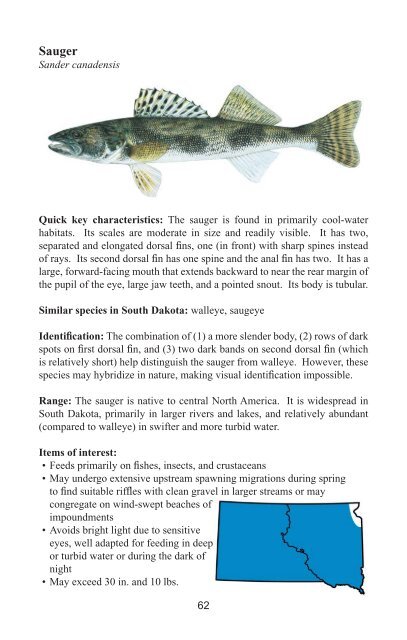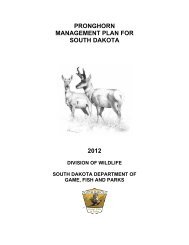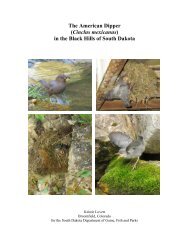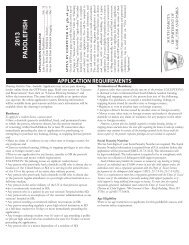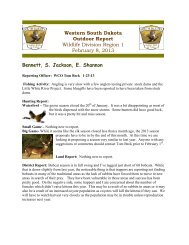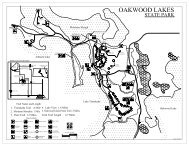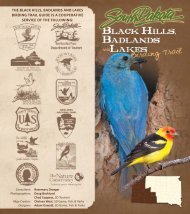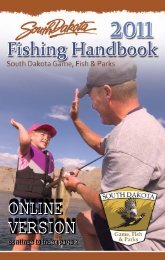pdf version - South Dakota Department of Game, Fish and Parks
pdf version - South Dakota Department of Game, Fish and Parks
pdf version - South Dakota Department of Game, Fish and Parks
Create successful ePaper yourself
Turn your PDF publications into a flip-book with our unique Google optimized e-Paper software.
Sauger<br />
S<strong>and</strong>er canadensis<br />
Quick key characteristics: The sauger is found in primarily cool-water<br />
habitats. Its scales are moderate in size <strong>and</strong> readily visible. It has two,<br />
separated <strong>and</strong> elongated dorsal fi ns, one (in front) with sharp spines instead<br />
<strong>of</strong> rays. Its second dorsal fi n has one spine <strong>and</strong> the anal fi n has two. It has a<br />
large, forward-facing mouth that extends backward to near the rear margin <strong>of</strong><br />
the pupil <strong>of</strong> the eye, large jaw teeth, <strong>and</strong> a pointed snout. Its body is tubular.<br />
Similar species in <strong>South</strong> <strong>Dakota</strong>: walleye, saugeye<br />
Identifi cation: The combination <strong>of</strong> (1) a more slender body, (2) rows <strong>of</strong> dark<br />
spots on fi rst dorsal fi n, <strong>and</strong> (3) two dark b<strong>and</strong>s on second dorsal fi n (which<br />
is relatively short) help distinguish the sauger from walleye. However, these<br />
species may hybridize in nature, making visual identifi cation impossible.<br />
Range: The sauger is native to central North America. It is widespread in<br />
<strong>South</strong> <strong>Dakota</strong>, primarily in larger rivers <strong>and</strong> lakes, <strong>and</strong> relatively abundant<br />
(compared to walleye) in swifter <strong>and</strong> more turbid water.<br />
Items <strong>of</strong> interest:<br />
• Feeds primarily on fi shes, insects, <strong>and</strong> crustaceans<br />
• May undergo extensive upstream spawning migrations during spring<br />
to fi nd suitable riffl es with clean gravel in larger streams or may<br />
congregate on wind-swept beaches <strong>of</strong><br />
impoundments<br />
• Avoids bright light due to sensitive<br />
eyes, well adapted for feeding in deep<br />
or turbid water or during the dark <strong>of</strong><br />
night<br />
• May exceed 30 in. <strong>and</strong> 10 lbs.<br />
62


